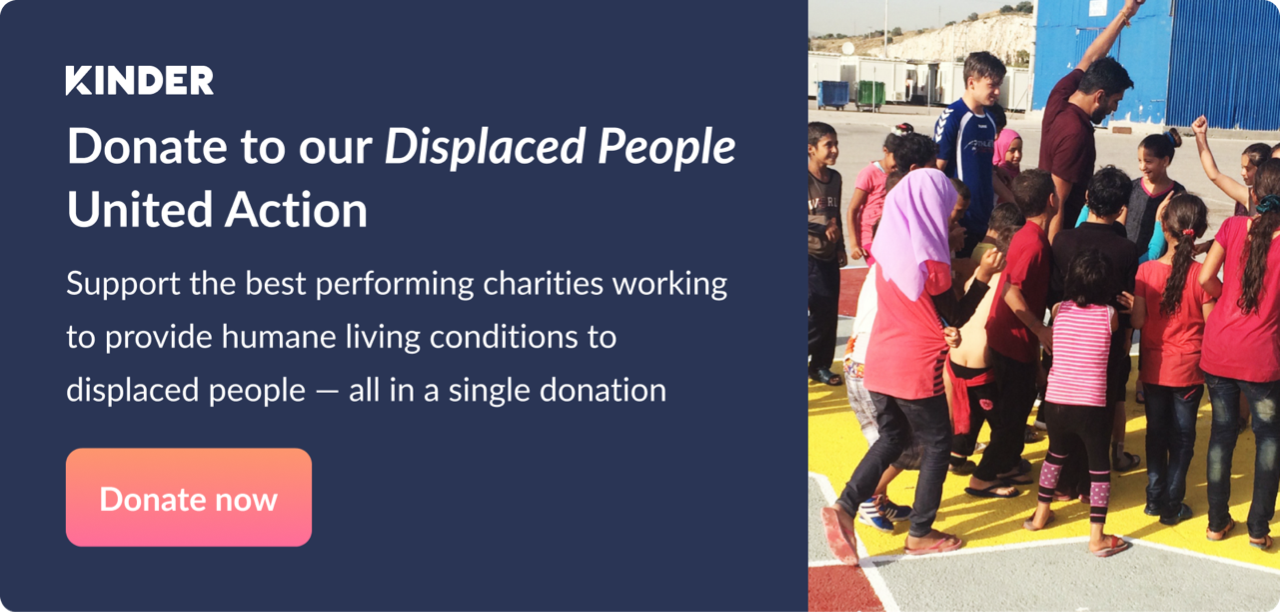According to the UNHCR, “79.5 million people were forcibly displaced worldwide at the end of 2019” — almost the entire population of Germany! — 26 million of which were refugees. The causes of forced displacement are numerous; war, famine, natural disasters, and dictatorship. Even when, like me, you’re not a star at crunching numbers, these figures are overwhelming.
People move from country to country seeking asylum and, even when successful, typically bear permanent scars. Crossing the border to safety is not enough to erase the experience of war, violence, and persecution.
Though ever-lasting, the symptoms of PTSD in refugee communities can be treated with various forms of therapy. Where traditional therapy is not successful or applicable, art can become an efficient way to treat PTSD and trauma-related symptoms. But how? Here’s my take.
Art and Trauma: Visualise, Channel, and Master
While making art, you essentially pause. You concentrate on a practical task— a drawing, a painting, or a sculpture. Your brain unwinds in a way similar to meditation. You focus on your body (your hand), and appreciate its ability to produce something. You express your feelings through drawing, feelings that perhaps you are unable to voice through words.
At the same time, you visualise your emotions through an external medium. There they are, on paper, on clay, on the canvas, looking at you. This external visualization is the very first step towards channeling and mastering feelings. Art becomes a loyal supporter, a self-made therapist who helps you go through the process of healing.
This process could be therapeutic for anyone, but why does art therapy prove to be efficient with refugees in particular?
Why is Art-Therapy so effective for refugees?
According to Refugee Health, the breadth and depth of refugee trauma is far greater than what is traditionally thought of as a traumatic event. Witnessing wars, genocides, and very often being separated from one’s family make up only part of the traumas that refugees carry with them— even when they finally manage to relocate to a safe environment. Relocating and re-integrating while experiencing overwhelming loss can be extremely challenging.
What refugees experience is a sense of displacement and separation from their physical home and culture. By focussing on a simple, manual gesture, like the act of drawing, refugees are able to reconnect with their own bodies, their very first home. Starting from the body is essential to overcome traumas. The body is in fact the first witness and carrier of traumas and needs to undergo a similar process of healing as the mind.
“Taking their body back” enables refugees to deal with a much bigger loss, the loss of their physical home. When relocating to a new place, societal isolation, and struggles to integrate are common problems. In refugees, these resonate even more due to forced relocation. They feel they have lost their home and they are unable to integrate in the new (given)one: they essentially live in limbo.
In these circumstances, art doesn’t only provide a medium to express and master feelings, but also a way to retain cultural identity in contrast with the new environment. It’s a powerful response and reminder of both personal and cultural identity.
These art therapy programmes offer an invaluable opportunity for people who share similar experiences to build both a safe space to express themselves and a community. That's the story of Salma Zulfiqar and her ARTconnects project that helps refugee women to reconnect with themselves and build a community during the pandemic. By exchanging their art, refugee women who never met before felt empowered even if only via a Zoom session. Imagine the potential of these sessions in person!
Art therapy can have a considerable impact on refugees’ lives and their ability to integrate in a new environment. But there is much more to do to support refugees all over the world. You can support and volunteer at your local refugee centres, but most importantly, you can donate to charities that provide dignified lives to displaced people.
Written by Alessandra Giliberto







